MaryAnn Bernal's Blog, page 169
June 20, 2015
History Trivia - Battle of Chalons: Flavius Aetius' defeats Attila the Hun
June 20
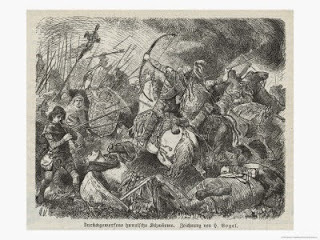
451 Battle of Chalons: Flavius Aetius' defeated Attila the Hun at Catalarinische Fields. Theodorid, King of the Visigoths was mortally wounded in this battle.
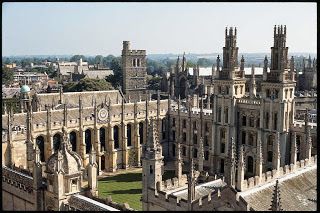
1214 The University of Oxford received its charter.

1685 Monmouth Rebellion: James Scott, 1st Duke of Monmouth declared himself King of England at Bridgwater.

451 Battle of Chalons: Flavius Aetius' defeated Attila the Hun at Catalarinische Fields. Theodorid, King of the Visigoths was mortally wounded in this battle.

1214 The University of Oxford received its charter.

1685 Monmouth Rebellion: James Scott, 1st Duke of Monmouth declared himself King of England at Bridgwater.
Published on June 20, 2015 02:30
June 19, 2015
History Trivia - Magna Carta sealed
June 19
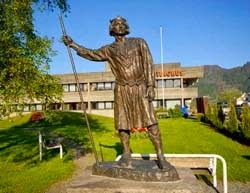
1179 The Norwegian Battle of Kalvskinnet outside Nidaros. Earl Erling Skakke was killed, and the battle changed the tide of the civil wars..
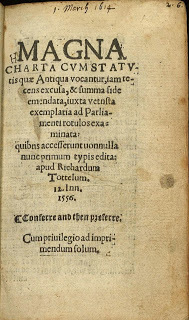
1215 Magna Carta sealed: Following a revolt by the English nobility against his rule, King John puts his royal seal on the Magna Carta, or "Great Charter."
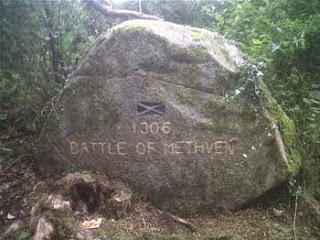
1306 Wars for Scottish Independence: The Earl of Pembroke's army defeated Robert Bruce's Scottish army at the Battle of Methven.

1179 The Norwegian Battle of Kalvskinnet outside Nidaros. Earl Erling Skakke was killed, and the battle changed the tide of the civil wars..

1215 Magna Carta sealed: Following a revolt by the English nobility against his rule, King John puts his royal seal on the Magna Carta, or "Great Charter."

1306 Wars for Scottish Independence: The Earl of Pembroke's army defeated Robert Bruce's Scottish army at the Battle of Methven.
Published on June 19, 2015 01:30
June 18, 2015
Dinos Issued a Climate Warning 215M Years Ago
Sauropods avoided volatile tropics in Triassic
 Only small, carnivorous dinosaurs could have survived these conditions, a study finds. (Victor Leshyk Newser
Only small, carnivorous dinosaurs could have survived these conditions, a study finds. (Victor Leshyk Newser
Scientists have long been baffled by a lack of Triassic period fossils from large, herbivorous dinosaurs known as sauropods near the equator. A new study offers some illumination: It suggests a hot, unpredictable climate and high carbon dioxide levels kept some of the world's first dinosaurs away—and may shed light on our own issues with climate change. Researchers first analyzed ancient sedimentary rocks in New Mexico, which would have been much closer to the equator as part of the supercontinent Pangea some 215 million years ago, reports LiveScience. In separating carbon isotopes from fossilized organic matter, they identified significant and rapid changes to the ecosystem and atmospheric CO2 levels—which were four to six times those of today. Pollen and spores suggested available plants varied in quantity based on the frequent changes, while fossil charcoal showed evidence of wildfires every few dozen years that wreaked havoc on vegetation.
The combined factors suggest an environment too unstable for sauropods until about 30 million years later, though small, carnivorous dinosaurs did populate the area. "The conditions would have been something similar to the arid Western United States today, although there would have been trees and smaller plants near streams and rivers and forests during humid times," study author Jessica Whiteside explains in a press release. Eerily, she writes at the Conversation that "rapid climate swings and extremes of drought and intense heat driven by increasing atmospheric CO2 levels have as much ability to alter the vegetation supporting modern human populations as they did for the large plant-eating dinosaurs in the Triassic." Whiteside adds we can expect "profound challenges to human sustainability in the future if we experience the high CO2 conditions predicted to develop in the coming 100 to 200 years." (Scientists made an incredible discovery inside "crap" dino fossils.)
 Only small, carnivorous dinosaurs could have survived these conditions, a study finds. (Victor Leshyk Newser
Only small, carnivorous dinosaurs could have survived these conditions, a study finds. (Victor Leshyk NewserScientists have long been baffled by a lack of Triassic period fossils from large, herbivorous dinosaurs known as sauropods near the equator. A new study offers some illumination: It suggests a hot, unpredictable climate and high carbon dioxide levels kept some of the world's first dinosaurs away—and may shed light on our own issues with climate change. Researchers first analyzed ancient sedimentary rocks in New Mexico, which would have been much closer to the equator as part of the supercontinent Pangea some 215 million years ago, reports LiveScience. In separating carbon isotopes from fossilized organic matter, they identified significant and rapid changes to the ecosystem and atmospheric CO2 levels—which were four to six times those of today. Pollen and spores suggested available plants varied in quantity based on the frequent changes, while fossil charcoal showed evidence of wildfires every few dozen years that wreaked havoc on vegetation.
The combined factors suggest an environment too unstable for sauropods until about 30 million years later, though small, carnivorous dinosaurs did populate the area. "The conditions would have been something similar to the arid Western United States today, although there would have been trees and smaller plants near streams and rivers and forests during humid times," study author Jessica Whiteside explains in a press release. Eerily, she writes at the Conversation that "rapid climate swings and extremes of drought and intense heat driven by increasing atmospheric CO2 levels have as much ability to alter the vegetation supporting modern human populations as they did for the large plant-eating dinosaurs in the Triassic." Whiteside adds we can expect "profound challenges to human sustainability in the future if we experience the high CO2 conditions predicted to develop in the coming 100 to 200 years." (Scientists made an incredible discovery inside "crap" dino fossils.)
Published on June 18, 2015 06:08
History Trivia - Swedish Vikings attack Constantinople
June 18
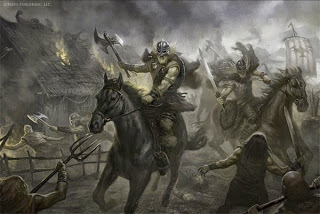
860 Swedish Vikings attacked Constantinople.
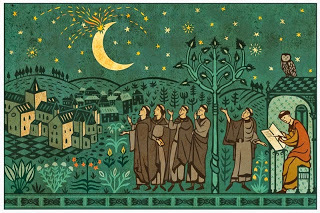
1178 Proposed time of origin of the lunar crater Giordano Bruno - five Canterbury monks reported an explosion on the moon (only known observation).
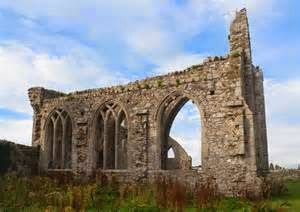
1264 The Parliament of Ireland met at Castledermot in County Kildare, the first definitively known meeting of this Irish legislature.

860 Swedish Vikings attacked Constantinople.

1178 Proposed time of origin of the lunar crater Giordano Bruno - five Canterbury monks reported an explosion on the moon (only known observation).

1264 The Parliament of Ireland met at Castledermot in County Kildare, the first definitively known meeting of this Irish legislature.
Published on June 18, 2015 01:00
June 17, 2015
Search for King Henry's Tomb Centers on English Playground
Live Science
[image error]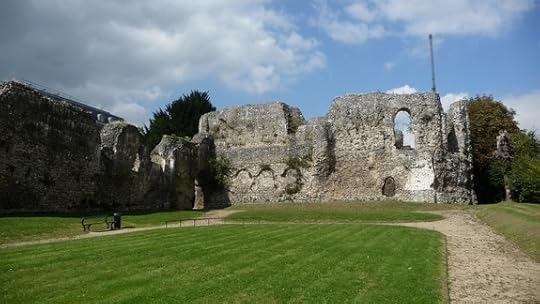
 Henry I was interred in front of the high altar of Reading Abbey (shown here) after he died in 1135, according to official histories of the British monarchy.
Henry I was interred in front of the high altar of Reading Abbey (shown here) after he died in 1135, according to official histories of the British monarchy.
Credit: Neil Thompson, Flickr View full size image
If the English King Richard III was the "king in a car park," King Henry I may prove to be the "king in a playground."
In the wake of an archaeological dig that found the bones of Richard III beneath a parking lot in Leicester, England, British historians and archaeologists are turning to a church and school yard in the town of Reading in search of the remains of Henry I, who ruled England from 1100 to 1135. The modern buildings are on the site of the old Reading Abbey, which was shut down — its abbot was hanged for treason — in 1539.
"We have a very good idea, within a few feet or yards, of where Henry was buried," said John Mullaney, a local historian and author of "Reading's Abbey Quarter: An Illustrated History" (Scallop Shell Press, 2014). Mullaney and other local leaders have been joined in their efforts with Philippa Langley of the Richard III Society, the screenwriter who spearheaded the search for that lost king. [In Photos: Search for the Grave of King Richard III]
Whether Henry's bones remain where they were laid to rest is a mystery, Mullaney said. But even if archaeologists can't find the body of the king, exploration of the ruins could answer unsolved questions about abbey life and what the site was used for before Henry I ordered the abbey built.
Henry's abbey
Henry I was the fourth son of William the Conqueror, who, upon his death, granted the throne to his oldest son, William II. William the Conqueror's second son, Richard, died before his father, and the third, Robert, got the throne of Normandy. Henry was left to purchase a bit of western Normandy from his brother. After a bout of familial infighting and the death of William II in 1100, Henry seized the throne of England. In 1106, he conquered Normandy and kept his brother Robert in captivity until Robert's death 28 years later. [Family Ties: 8 Truly Dysfunctional Royal Families]
According to the official histories of the British monarchy, Henry I centralized administration and tax collection in England. In 1121, he founded an enormous abbey in Reading. He was interred in front of the Reading Abbey's high alter after his death in 1135 — rumored to be the result of eating too many lampreys (a type of eel).
Over the centuries, Reading Abbey became one of the wealthiest abbeys in England. By 1539, the abbey's income was 2,000 pounds a year, putting it in the top dozen richest religious houses in the country, Mullaney told Live Science.
During the reign of the Tudor king Henry VIII, however, religious houses came under attack by church reformers who decried them as corrupt. In 1531, Henry VIII declared himself Supreme Head of the Church of England — part of his efforts to get a divorce from the first of his six wives. This designation gave him a great deal of power to shut down monasteries and seize their assets for the crown.
Reading Abbey was one of the victims, as was its last abbot, Hugh Faringdon (or Cook). Faringdon stood firm against Henry VIII's efforts to shut down the abbey and was convicted of treason for his efforts. He was condemned to hanging, drawing and quartering — that "delightful way of disposing of people," Mullaney said.
Fortunately for Faringdon, his executioner either took mercy on him or messed up. Faringdon died during the hanging at the gates of his abbey, spared the torture of disembowelment and dismemberment. [Medieval Torture's 10 Biggest Myths]
An abbey's ruins
After that, much of the abbey fell into ruins and was stripped of its valuable lead and stone. During the English Civil War of 1642 to 1651, ramparts were built right through the old cloisters and nave of the church. In the past few years, Mullaney said, the ruins have become so unstable that they've been closed to the public.
The main goal now, Mullaney said, is to get funding from the charity Historic England, which oversees historic sites in England, to shore up the ruins and reopen them to the public.
"They're going to grant us, we hope — and it looks very hopeful — just under 2 million pounds [about $3 million]," Mullaney said.
A second effort, called the Hidden Abbey Project, aims to secure funding for a ground penetrating radar (GPR) survey of the ruins. GPR uses radar to create images of the subsurface, revealing buried objects that might be of archaeological interest.
Some parts of the abbey still stand, including its old dormitory, portions of the refectory and south and north transepts (wings of a church), the chapter house and portions of the Hospitium, where pilgrims to the abbey would have stayed. But much of the abbey's west side is gone, and no one knows what lies under the chapter house. There could be a cellar, Mullaney said, or possibly some human burials. The abbey site was also in use for many years before the abbey was built; Danish forces may have even used the high ground there as an encampment in the 800s.
A GPR survey also might reveal what happened to Henry I's remains.
"We know there was quite an ornate tomb, a monumental tomb, probably with his effigy over the site," Mullaney said. As late as the reign of Richard II from 1367 to 1400, this tomb still existed.
Now, the area that used to be the church's high alter is land owned by a defunct prison, and a school and playground sit over the site where Henry I's tomb would have been, Mullaney said.
In the late 1700s and early 1800s, diggers uncovered three sarcophagi, one of which was made quite well, at the site. It could have been Henry I's, Mullaney said, but no one knows. All three sarcophagi went missing.
Another set of rumors dating from the 1700s holds that looters went looking for Henry I's coffin during the reign of Edward VI, between 1547 and 1553. (Edward VI was the son of Henry VIII and his third wife, Jane Seymour.) According to those tales, the looters found Henry I's coffin but were disappointed that it was not made of silver as they'd thought; then, they scattered the bones and left.
Or, Henry's grave might be undisturbed, Mullaney said. Either way, there's some chance that the monarch could be recovered. Right now, he's the only English monarch since 1066 whose grave is still lost.
"If these bones were scattered around the place and you could gather them together, then we may be able to say, 'Well, this is Henry,'" Mullaney said. "And we could maybe reinter him with the dignity that one associates with any person, let alone a royal person."
[image error]

 Henry I was interred in front of the high altar of Reading Abbey (shown here) after he died in 1135, according to official histories of the British monarchy.
Henry I was interred in front of the high altar of Reading Abbey (shown here) after he died in 1135, according to official histories of the British monarchy.Credit: Neil Thompson, Flickr View full size image
If the English King Richard III was the "king in a car park," King Henry I may prove to be the "king in a playground."
In the wake of an archaeological dig that found the bones of Richard III beneath a parking lot in Leicester, England, British historians and archaeologists are turning to a church and school yard in the town of Reading in search of the remains of Henry I, who ruled England from 1100 to 1135. The modern buildings are on the site of the old Reading Abbey, which was shut down — its abbot was hanged for treason — in 1539.
"We have a very good idea, within a few feet or yards, of where Henry was buried," said John Mullaney, a local historian and author of "Reading's Abbey Quarter: An Illustrated History" (Scallop Shell Press, 2014). Mullaney and other local leaders have been joined in their efforts with Philippa Langley of the Richard III Society, the screenwriter who spearheaded the search for that lost king. [In Photos: Search for the Grave of King Richard III]
Whether Henry's bones remain where they were laid to rest is a mystery, Mullaney said. But even if archaeologists can't find the body of the king, exploration of the ruins could answer unsolved questions about abbey life and what the site was used for before Henry I ordered the abbey built.
Henry's abbey
Henry I was the fourth son of William the Conqueror, who, upon his death, granted the throne to his oldest son, William II. William the Conqueror's second son, Richard, died before his father, and the third, Robert, got the throne of Normandy. Henry was left to purchase a bit of western Normandy from his brother. After a bout of familial infighting and the death of William II in 1100, Henry seized the throne of England. In 1106, he conquered Normandy and kept his brother Robert in captivity until Robert's death 28 years later. [Family Ties: 8 Truly Dysfunctional Royal Families]
According to the official histories of the British monarchy, Henry I centralized administration and tax collection in England. In 1121, he founded an enormous abbey in Reading. He was interred in front of the Reading Abbey's high alter after his death in 1135 — rumored to be the result of eating too many lampreys (a type of eel).
Over the centuries, Reading Abbey became one of the wealthiest abbeys in England. By 1539, the abbey's income was 2,000 pounds a year, putting it in the top dozen richest religious houses in the country, Mullaney told Live Science.
During the reign of the Tudor king Henry VIII, however, religious houses came under attack by church reformers who decried them as corrupt. In 1531, Henry VIII declared himself Supreme Head of the Church of England — part of his efforts to get a divorce from the first of his six wives. This designation gave him a great deal of power to shut down monasteries and seize their assets for the crown.
Reading Abbey was one of the victims, as was its last abbot, Hugh Faringdon (or Cook). Faringdon stood firm against Henry VIII's efforts to shut down the abbey and was convicted of treason for his efforts. He was condemned to hanging, drawing and quartering — that "delightful way of disposing of people," Mullaney said.
Fortunately for Faringdon, his executioner either took mercy on him or messed up. Faringdon died during the hanging at the gates of his abbey, spared the torture of disembowelment and dismemberment. [Medieval Torture's 10 Biggest Myths]
An abbey's ruins
After that, much of the abbey fell into ruins and was stripped of its valuable lead and stone. During the English Civil War of 1642 to 1651, ramparts were built right through the old cloisters and nave of the church. In the past few years, Mullaney said, the ruins have become so unstable that they've been closed to the public.
The main goal now, Mullaney said, is to get funding from the charity Historic England, which oversees historic sites in England, to shore up the ruins and reopen them to the public.
"They're going to grant us, we hope — and it looks very hopeful — just under 2 million pounds [about $3 million]," Mullaney said.
A second effort, called the Hidden Abbey Project, aims to secure funding for a ground penetrating radar (GPR) survey of the ruins. GPR uses radar to create images of the subsurface, revealing buried objects that might be of archaeological interest.
Some parts of the abbey still stand, including its old dormitory, portions of the refectory and south and north transepts (wings of a church), the chapter house and portions of the Hospitium, where pilgrims to the abbey would have stayed. But much of the abbey's west side is gone, and no one knows what lies under the chapter house. There could be a cellar, Mullaney said, or possibly some human burials. The abbey site was also in use for many years before the abbey was built; Danish forces may have even used the high ground there as an encampment in the 800s.
A GPR survey also might reveal what happened to Henry I's remains.
"We know there was quite an ornate tomb, a monumental tomb, probably with his effigy over the site," Mullaney said. As late as the reign of Richard II from 1367 to 1400, this tomb still existed.
Now, the area that used to be the church's high alter is land owned by a defunct prison, and a school and playground sit over the site where Henry I's tomb would have been, Mullaney said.
In the late 1700s and early 1800s, diggers uncovered three sarcophagi, one of which was made quite well, at the site. It could have been Henry I's, Mullaney said, but no one knows. All three sarcophagi went missing.
Another set of rumors dating from the 1700s holds that looters went looking for Henry I's coffin during the reign of Edward VI, between 1547 and 1553. (Edward VI was the son of Henry VIII and his third wife, Jane Seymour.) According to those tales, the looters found Henry I's coffin but were disappointed that it was not made of silver as they'd thought; then, they scattered the bones and left.
Or, Henry's grave might be undisturbed, Mullaney said. Either way, there's some chance that the monarch could be recovered. Right now, he's the only English monarch since 1066 whose grave is still lost.
"If these bones were scattered around the place and you could gather them together, then we may be able to say, 'Well, this is Henry,'" Mullaney said. "And we could maybe reinter him with the dignity that one associates with any person, let alone a royal person."
Published on June 17, 2015 07:40
History Trivia - Cornish Rebellion - Battle of Deptford Bridge
June 17
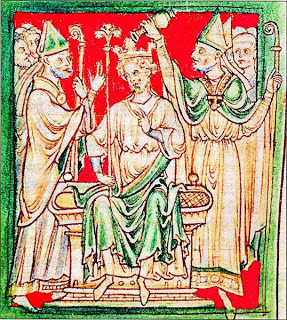
1194 Richard I (the Lionheart) was crowned again, after having been held captive in Australia for two years by Emperor Henry VI.

1239 Edward I was born.
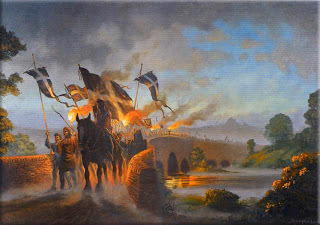
1497 Cornish Rebellion - Battle of Deptford Bridge – forces under King Henry VII defeated troops led by Michael An Gof.

1194 Richard I (the Lionheart) was crowned again, after having been held captive in Australia for two years by Emperor Henry VI.

1239 Edward I was born.

1497 Cornish Rebellion - Battle of Deptford Bridge – forces under King Henry VII defeated troops led by Michael An Gof.
Published on June 17, 2015 02:00
June 16, 2015
Gladiator Fights Revealed in Ancient Graffiti
Live Science
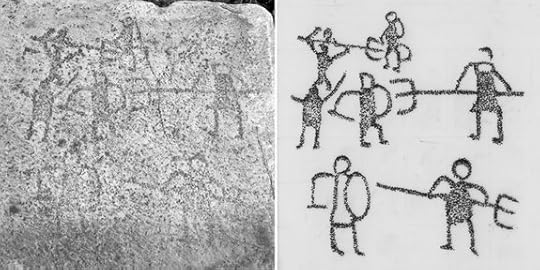
 Graffiti discovered in the ancient city of Aphrodisias shows gladiator fights between a retiarius (a gladiator armed with a trident and net) and a secutor (gladiator equipped with a sword and shield).
Graffiti discovered in the ancient city of Aphrodisias shows gladiator fights between a retiarius (a gladiator armed with a trident and net) and a secutor (gladiator equipped with a sword and shield).
Credit: Drawing by Nicholas Quiring, photograph courtesy Angelos Chaniotis
Hundreds of graffiti messages engraved into stone in the ancient city of Aphrodisias, in modern-day Turkey, have been discovered and deciphered, revealing what life was like there over 1,500 years ago, researchers say.
The graffiti touches on many aspects of the city's life, including gladiator combat, chariot racing , religious fighting and sex. The markings date to a time when the Roman and Byzantine empires ruled over the city.
, religious fighting and sex. The markings date to a time when the Roman and Byzantine empires ruled over the city.
"Hundreds of graffiti, scratched or chiseled on stone, have been preserved in Aphrodisias — more than in most other cities of the Roman East(an area which includes Greece and part of the Middle East)," said Angelos Chaniotis, a professor at the Institute for Advanced Study, in Princeton New Jersey, in a lecture he gave recently at Toronto's Royal Ontario Museum.
Study, in Princeton New Jersey, in a lecture he gave recently at Toronto's Royal Ontario Museum.
"Graffiti are the products of instantaneous situations, often creatures of the night, scratched by people amused, excited , agitated, perhaps drunk. This is why they are so hard to interpret," Chaniotis said. "But this is why they are so valuable. They are records of voices and feelings on stone." [See Photos of the Graffiti in the Ancient City of Aphrodisias]
, agitated, perhaps drunk. This is why they are so hard to interpret," Chaniotis said. "But this is why they are so valuable. They are records of voices and feelings on stone." [See Photos of the Graffiti in the Ancient City of Aphrodisias]
The graffiti includes sexual imagery, with one plaque showing numerous penises. "A plaque built into the city wall has representations of phalluses of various sizes and positions and employed in a variety of ways," Chaniotis said.
Trident man vs. sword man
vs. sword man
The graffiti also includes many depictions of gladiators. Although the city was part of the Roman Empire, the people of Aphrodisias mainly spoke Greek. The graffiti is evidence that people living in Greek-speaking cities embraced gladiator fighting, Chaniotis said.
"Pictorial graffiti connected with gladiatorial combat are very numerous," he said. "And this abundance of images leaves little doubt about the great popularity of the most brutal contribution of the Romans to the culture of the Greek east." [Photos: Gladiators of the Roman Empire]
Some of the most interesting gladiator graffiti was found on a plaque in the city's stadium where gladiator fights took place. The plaque depicts battles between two combatants: a retiarius (a type of gladiator armed with a trident and net) and a secutor (a type of gladiator equipped with a sword and shield).
One scene on the plaque shows the retiarius emerging victorious, holding a trident over his head, the weapon pointed toward the wounded secutor. On the same plaque, another scene shows the secutor chasing a fleeing retiarius. Still another image shows the two types of gladiators locked in combat, a referee overseeing the fight.
"Probably a spectator has sketched scenes he had seen in the arena," Chaniotis said. The images offer "an insight (on) the perspective of the contemporary spectator. The man who went to the arena in order to experience the thrill and joy of watching — from a safe distance — other people die."
(on) the perspective of the contemporary spectator. The man who went to the arena in order to experience the thrill and joy of watching — from a safe distance — other people die."
Chariot-racing rivalry
Chariot racing is another popular subject in the graffiti. The city had three chariot-racing clubs competing against each other, records show.
The south market, which included a public park with a pool and porticoes, was a popular place for chariot-racing fans to hang outthe graffiti shows. It may be "where the clubhouses of the factions of the hippodrome were located — the reds, the greens, the blues," said Chaniotis, referring to the names of the different racing clubs.
The graffiti includes boastful messages after a club won and lamentations when a club was having a bad time. "Victory for the red," reads one graffiti; "bad years for the greens," says another; "the fortune of the blues prevails," reads a third.
Three religions
Religion was also depicted in the city's graffiti. "Christians, Jews and a strong group of philosophically educated followers of the polytheistic religions competed in Aphrodisias for the support of those who were asking the same questions: Is there a god? How can we attain a better afterlife?" said Chaniotis.
Graffiti was one way in which these groups competed. Archaeologists have found the remains of statues representing governors (or other elite persons) who supported polytheistic beliefs. Christians had registered their disapproval of such religions by carving abbreviations on the statues thatmean"Mary gives birth to Jesus," refuting the idea that many gods existed.
Those who followed polytheistic beliefs carved graffiti of their own.
"To the Christian symbol of the cross, the followers of the old religion responded by engraving their own symbol, the double axe," said Chaniotis, noting that this object was a symbol of Carian Zeus (a god), and is seen on the city's coins.
Aphrodisias also boasted a sizable Jewish population. Many Jewish traders set up shop in an abandoned temple complex known as the Sebasteion.
Among the graffiti found there is a depiction of a Hanukkah menorah, a nine-candle lamp that would be lit during the Jewish festival. "This may be one of the earliest representations of a Hanukkah menorah that we know from ancient times," said Chaniotis.
End of an era
Most of the graffiti Chaniotis recorded dates between roughly A.D. 350 and A.D. 500, appearing to decline around the time Justinian became emperor of the Byzantine Empire, in A.D. 527.
In the decades that followed, Justinian restricted or banned polytheistic and Jewish practices. Aphrodisias, which had been named after the goddess Aphrodite, was renamed Stauropolis. Polytheistic and Jewish imagery, including some of the graffiti, was destroyed.
But while the city was abandoned in the seventh century, the graffiti left by the people remains today. "Through the graffiti, the petrified voices and feelings of the Aphrodisians still reach us, and they still matter," Chaniotis said.
The lecture by Chaniotis was the keynote address given at the annual meeting of the Classical Association of Canada.

 Graffiti discovered in the ancient city of Aphrodisias shows gladiator fights between a retiarius (a gladiator armed with a trident and net) and a secutor (gladiator equipped with a sword and shield).
Graffiti discovered in the ancient city of Aphrodisias shows gladiator fights between a retiarius (a gladiator armed with a trident and net) and a secutor (gladiator equipped with a sword and shield).Credit: Drawing by Nicholas Quiring, photograph courtesy Angelos Chaniotis
Hundreds of graffiti messages engraved into stone in the ancient city of Aphrodisias, in modern-day Turkey, have been discovered and deciphered, revealing what life was like there over 1,500 years ago, researchers say.
The graffiti touches on many aspects of the city's life, including gladiator combat, chariot racing
 , religious fighting and sex. The markings date to a time when the Roman and Byzantine empires ruled over the city.
, religious fighting and sex. The markings date to a time when the Roman and Byzantine empires ruled over the city."Hundreds of graffiti, scratched or chiseled on stone, have been preserved in Aphrodisias — more than in most other cities of the Roman East(an area which includes Greece and part of the Middle East)," said Angelos Chaniotis, a professor at the Institute for Advanced
 Study, in Princeton New Jersey, in a lecture he gave recently at Toronto's Royal Ontario Museum.
Study, in Princeton New Jersey, in a lecture he gave recently at Toronto's Royal Ontario Museum. "Graffiti are the products of instantaneous situations, often creatures of the night, scratched by people amused, excited
 , agitated, perhaps drunk. This is why they are so hard to interpret," Chaniotis said. "But this is why they are so valuable. They are records of voices and feelings on stone." [See Photos of the Graffiti in the Ancient City of Aphrodisias]
, agitated, perhaps drunk. This is why they are so hard to interpret," Chaniotis said. "But this is why they are so valuable. They are records of voices and feelings on stone." [See Photos of the Graffiti in the Ancient City of Aphrodisias]The graffiti includes sexual imagery, with one plaque showing numerous penises. "A plaque built into the city wall has representations of phalluses of various sizes and positions and employed in a variety of ways," Chaniotis said.
Trident man
 vs. sword man
vs. sword manThe graffiti also includes many depictions of gladiators. Although the city was part of the Roman Empire, the people of Aphrodisias mainly spoke Greek. The graffiti is evidence that people living in Greek-speaking cities embraced gladiator fighting, Chaniotis said.
"Pictorial graffiti connected with gladiatorial combat are very numerous," he said. "And this abundance of images leaves little doubt about the great popularity of the most brutal contribution of the Romans to the culture of the Greek east." [Photos: Gladiators of the Roman Empire]
Some of the most interesting gladiator graffiti was found on a plaque in the city's stadium where gladiator fights took place. The plaque depicts battles between two combatants: a retiarius (a type of gladiator armed with a trident and net) and a secutor (a type of gladiator equipped with a sword and shield).
One scene on the plaque shows the retiarius emerging victorious, holding a trident over his head, the weapon pointed toward the wounded secutor. On the same plaque, another scene shows the secutor chasing a fleeing retiarius. Still another image shows the two types of gladiators locked in combat, a referee overseeing the fight.
"Probably a spectator has sketched scenes he had seen in the arena," Chaniotis said. The images offer "an insight
 (on) the perspective of the contemporary spectator. The man who went to the arena in order to experience the thrill and joy of watching — from a safe distance — other people die."
(on) the perspective of the contemporary spectator. The man who went to the arena in order to experience the thrill and joy of watching — from a safe distance — other people die."Chariot-racing rivalry
Chariot racing is another popular subject in the graffiti. The city had three chariot-racing clubs competing against each other, records show.
The south market, which included a public park with a pool and porticoes, was a popular place for chariot-racing fans to hang outthe graffiti shows. It may be "where the clubhouses of the factions of the hippodrome were located — the reds, the greens, the blues," said Chaniotis, referring to the names of the different racing clubs.
The graffiti includes boastful messages after a club won and lamentations when a club was having a bad time. "Victory for the red," reads one graffiti; "bad years for the greens," says another; "the fortune of the blues prevails," reads a third.
Three religions
Religion was also depicted in the city's graffiti. "Christians, Jews and a strong group of philosophically educated followers of the polytheistic religions competed in Aphrodisias for the support of those who were asking the same questions: Is there a god? How can we attain a better afterlife?" said Chaniotis.
Graffiti was one way in which these groups competed. Archaeologists have found the remains of statues representing governors (or other elite persons) who supported polytheistic beliefs. Christians had registered their disapproval of such religions by carving abbreviations on the statues thatmean"Mary gives birth to Jesus," refuting the idea that many gods existed.
Those who followed polytheistic beliefs carved graffiti of their own.
"To the Christian symbol of the cross, the followers of the old religion responded by engraving their own symbol, the double axe," said Chaniotis, noting that this object was a symbol of Carian Zeus (a god), and is seen on the city's coins.
Aphrodisias also boasted a sizable Jewish population. Many Jewish traders set up shop in an abandoned temple complex known as the Sebasteion.
Among the graffiti found there is a depiction of a Hanukkah menorah, a nine-candle lamp that would be lit during the Jewish festival. "This may be one of the earliest representations of a Hanukkah menorah that we know from ancient times," said Chaniotis.
End of an era
Most of the graffiti Chaniotis recorded dates between roughly A.D. 350 and A.D. 500, appearing to decline around the time Justinian became emperor of the Byzantine Empire, in A.D. 527.
In the decades that followed, Justinian restricted or banned polytheistic and Jewish practices. Aphrodisias, which had been named after the goddess Aphrodite, was renamed Stauropolis. Polytheistic and Jewish imagery, including some of the graffiti, was destroyed.
But while the city was abandoned in the seventh century, the graffiti left by the people remains today. "Through the graffiti, the petrified voices and feelings of the Aphrodisians still reach us, and they still matter," Chaniotis said.
The lecture by Chaniotis was the keynote address given at the annual meeting of the Classical Association of Canada.
Published on June 16, 2015 07:05
History Trivia - Rome sacked by the Vandal army
June 16
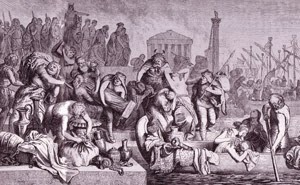
455 Rome was sacked by the Vandal army.
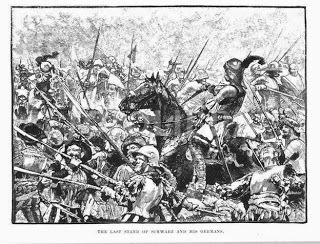
1487 Battle of Stoke Field, Henry VII defeated pretender Lambert Simnel at Stoke, in the final battle of the Wars of the Roses.
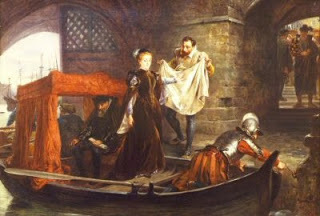
1567 Mary, Queen of Scots, was imprisoned in Lochleven Castle prison Scotland since she was perceived as a threat to Elizabeth I's monarchy.

455 Rome was sacked by the Vandal army.

1487 Battle of Stoke Field, Henry VII defeated pretender Lambert Simnel at Stoke, in the final battle of the Wars of the Roses.

1567 Mary, Queen of Scots, was imprisoned in Lochleven Castle prison Scotland since she was perceived as a threat to Elizabeth I's monarchy.
Published on June 16, 2015 01:30
June 15, 2015
Author K. Meador book signing - Saturday, July 18, 2015 - 3 pm CST

Meet author K. Meador Saturday, July 18 Hastings Book Store
1105 Garth Brooks Blvd
Yukon, OK, 73099
(405) 350-1803
3-5 pm
 Visit K. Meador Webpage
Visit K. Meador Webpage
Published on June 15, 2015 12:20
Roy Huff - Everville: The Fall of Brackenbone NOW AVAILABLE! - Enter the Giveaway
 To earn FREE DAILY ENTRIES for a chance to win a $200 Amazon Gift card AND a signed Everville book, scroll down to the Rafflecopter Entry Form OwenSage Everille
To earn FREE DAILY ENTRIES for a chance to win a $200 Amazon Gift card AND a signed Everville book, scroll down to the Rafflecopter Entry Form OwenSage Everille Ancient civilizations, parallel worlds, aliens, time travel, epic fantasy, dragons and college! Books #3 and #4 in the best-selling, award-winning Everville series can be read as stand alone novels and have it all for teens, new adults, and all ages alike. CLICK HERE to view the entire series.
˃˃˃ "A well-make epic fantasy novel that is going to please the genre fans." - Denis Vukosav TOP 50 REVIEWER UK / TOP 100 REVIEWER US
˃˃˃ "WOW! Fantasy, Action and Adventure at its best." - Larry B. Gray
>>>"The best fantasy book I've read in a long time!" - Debbie Champaigne
>>> "Roy paints amazing cinematic stories through his written words." - William McDonald
>>> "The author definitely draws the reader in. With a deft ability to bring situations and individuals to life." - Starrynight TOP 500 Reviewer UK
>>> "EPIC FANTASY! Sure Shot Winner." - Vaibhav TOP 500 Reviewer India ˃˃˃ "The various creatures found in these novels are ... not like anything I've read before." - Maja ˃˃˃ "Huff writes for every reader, regardless of their age or gender." - Sandy Sandmeyer ˃˃˃ "There are good life lessons to be learned from this as the baddies try to out wit the good guys!" - Liz Pomeroy TOP 1000 REVIEWER
˃˃˃ "Huff's novel took me to a different place, where daily life is somehow seen as only a surface-rippling manifestation of its beyond and beneath." - George F. Simons "at diversophy.com"
Everville: The Rise of Mallory, Readers' Favorite 2014 Young Adult Fantasy Silver Medal Winner!
More epic events to follow soon, so stay tuned. Don't forget to enter below for your chance to win fantastic books and prizes, and be sure to click the red button below to join my mailing list for exclusive FREE Fiction, giveaways, and news!
Amazon US
Published on June 15, 2015 04:30



